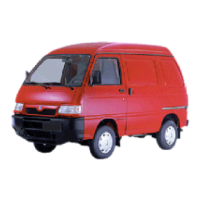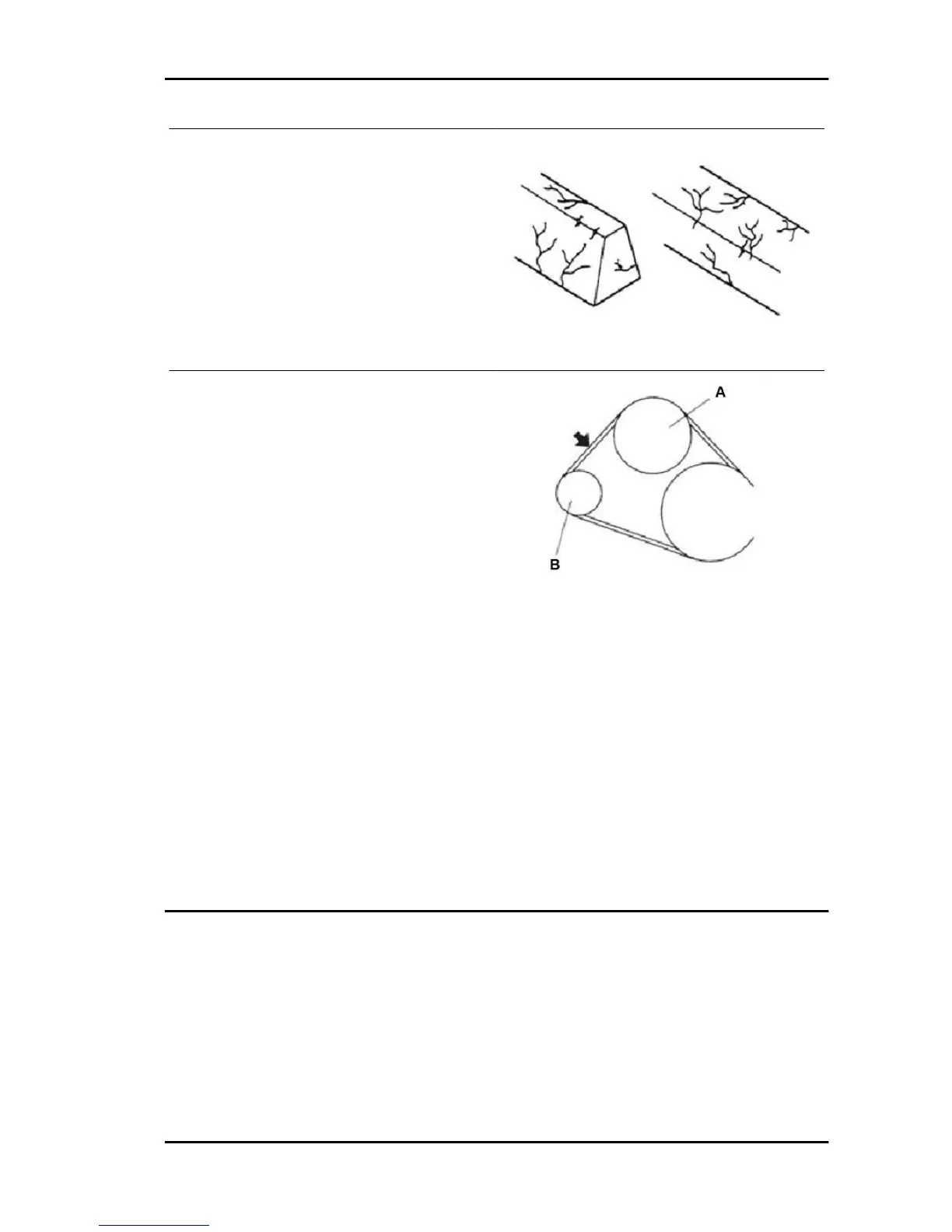Driving belt test
1. Visual inspection of the driving belt.
Visually check the belt for any traces of separation
of the upper or lower part of the belt from the ad-
hesive rubber, belt core separations from the
sides, belt core ravelling, adhesive rubber weft
ravelling, cracks or separations of ribs, tearing or
cracking in the belt internal ribs. Replace the driv-
ing belt, if necessary.
2. Driving belt tension test. Measure the driving
belt deflection (bending) when a 98 N (10 Kgf)
force is applied at the middle point of the belt, be-
tween the alternator pulley and the water pump
pulley.
Characteristic
Rated deflection of the New Belt (with a 10 kg
force applied at the indicated point):
3.5 - 5.5 mm
Rated deflection of the Used Belt (with a 10 kg
force applied at the indicated point):
4.5 - 6.5 mm
KEY:
A = Water pump pulley
B = Alternator pulley
Adjust driving belt tension, if necessary.
•
A "NEW BELT" IS A BELT THAT HAS BEEN USED FOR LESS THAN FIVE MINUTES ON
A RUNNING ENGINE.
•
A "USED BELT" IS A BELT THAT HAS BEEN USED FOR MORE THAN FIVE MINUTES
ON A RUNNING ENGINE.
•
AFTER FITTING A NEW BELT, LET THE ENGINE RUN FOR AT LEAST FIVE MINUTES
AND THEN CHECK TENSION AGAIN.
PORTER 1.3 16V Engine
EN - 233

